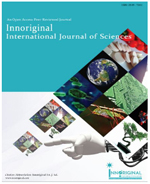ANTIMICROBIAL, PHYTOCHEMICAL AND QUANTITATIVE HPLC ANALYSIS OF Moringa oleifera ROOT
Abstract
Objective:Â Phytochemical, in-vitro antibacterial activity, qualitative and quantitative phytochemical analysis of Moringa oleifera, belonging to family Moringaceae was taken to identify active compound. Methods: Dried root powder was extracted with ethanol and subjected to phytochemical analysis and identified phytoconstituents by HPLC and also using standards Gallic acids, benzoic acids, quercetin as well as their antimicrobial activity was tested on Escherichia coli and Staphylococcus.aureus. Results: Moringa oleifera root extract (ethanolic) showed antimicrobial activity against Escherichia .coli and Staphylococcus aureus. Qualitative and quantitative analysis detects the presence of phenolic compounds and flavonoids which confers the bioactivity to the extract. Conclusion:Â From the studies, we conclude that ethanol extract of Moringa oleifera root showed evidence that it could be a good therapeutic agentKey words: Moringa oleifera, HPLC, antimicrobial activity, the phytochemical analysis.References
Julia coppin. A study of nutritional and medicinal values of Moringa oleifera leaves from susaharan Africa: Ghana, Rwanda Senegal and Zambia 2008.
Trapti Rastogi. Comparative Studies on Anthelmintic Activty of Moringa oleifera and Vitex Negundo. Asian J. Research Chem. 2009; vol. 2(2).
Roloff A, Weisgerber H, Lang U, Stimm B. Moringa oleifera Lam, 1785; Weinheim 2009.
Pal SK, Mukherjee PK, Saha BP. Studies on the antiulcer activity of Moringa oleifera leaf extract on gastric ulcer models in rats. Phytotherapy Research, 1995; 9: 463
Talhaliani P, Kar A. Pharmacological Research, 2000; 41(3): 319 – 323.
Nitin GS, Bonde CG, Patil VV, Narkhede SB, Patil AP, Kakade RT. Analgesic activity of seeds of Moringa oleifera Lam, Int. J. Green. Pharm.2008; 2: 108–110
Prakash AO, Tewari PK, Shukla S, Mathur R, Tewati KK. Postcoital antifertility effect of some medicinal plants in rats. Ind. Drug. 1987; 25:40-44.
Mittal M, Mittal P, Agarwal AC. Pharmacognostical and phytochemical investigation of antidiabetic activity of Moringa oleifera lam leaf. Ind. Pharm. 2007; 6:70-72.
Kumar, B., Gupta, S.K., Srinivasan, B.P., Srivastava, S., Saxena, R., 2013. Effects of Moringa oleifera on hyperglycemia induced retinal complications in experimental diabetic rats. 28th Asia Pacific Academy of Opthalmology (APAO) Congress, Jan. 17-20 2013, Hyderabad, India.
Chanchao C, Antimicrobial activity by Trigona laeviceps (stingless bee) honey from Thailand. Pak J Med Sci, 25(3): 364-369, (2009).
Apak L and Deogracious O, The in-vitro antibacterial activity of Annona senegalensis, Securidacca longipendiculata and Steganotaenia araliacea -Ugandan medicinal plants. African Health Sciences, 1 (6): 31–35, (2006).
Yamunadevi M, Wesely EG, Johnson M. Phytochemical studies on the terpenoids of medicinally important plant Aerva lanata L. using HPTLC. A. Pacific J. of Trop. Biomedicine. 2011. S220- S225.
Winter WP, K TMason, and Ford TD. Mechanism of saponininduced red cell hemolysis: reexamination.1993; Blood 82: Suppl. 1: 461.
Korkina LG, and Afanas'ev IB. Antioxidant and chelating properties of flavonoids. Adv Pharmacol.1997;


